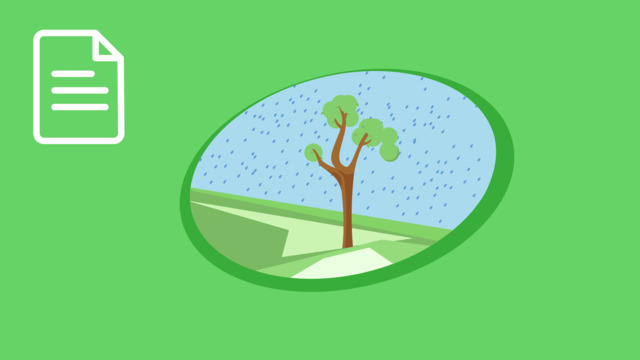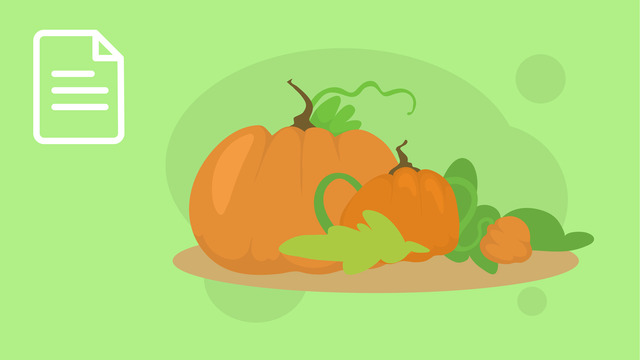Winter Season and Weather
- Winter Season and Weather - Introduction
- What is Winter?
- Winter Facts: A Closer Look
- Winter’s Impact on the Environment
- Winter’s Impact on Plants
- Winter’s Impact on Animals
Learning text on the topic Winter Season and Weather
Winter Season and Weather - Introduction
Have you ever wondered why winter is cold and dark, or why the animals seem to disappear in the winter? As we delve into the heart of winter, we'll discover the unique characteristics that make it a magical time of the year.
What is Winter?
Winter is the season of rest and renewal. Snow blankets the ground, temperatures plummet, and life slows down. It's a time for the natural world to rest and conserve energy for the vibrant months ahead.
Winter is one of the four seasons, that comes after Fall and before Spring. It signifies the period of the coldest temperatures and the retreat of life into a quiet state.

During winter in the Northern Hemisphere, the Earth's axis tilts away from the Sun, leading to shorter days and longer nights. This axial tilt results in the lowest temperatures of the year, as the sun's rays reach the Earth at a more oblique angle.
Let’s test what you’ve learned about winter so far!
Winter Facts: A Closer Look
Winter weather is characterized by its chill and, depending on your location, a beautiful blanket of snow. This season is marked by the shortest days and longest nights of the year, with temperatures often dropping below freezing.
Winter months and their weather patterns vary significantly by geographical location. In the Northern Hemisphere, winter spans December, January, and February, while in the Southern Hemisphere, it occurs from June to August. Here's a look at typical winter weather patterns in the Northern Hemisphere:
| Month | Typical Winter Weather |
|---|---|
| December | Cold, with snow in many areas |
| January | Coldest month with heavy snow possible |
| February | Still cold, but days start to lengthen and snow begins to turn to rain |
Winter’s Impact on the Environment
Winter profoundly affects the environment, slowing down growth and prompting adaptations for survival among animals and plants.
Winter’s Impact on Plants
Many plants enter a dormant state, or a state of rest, during winter, conserving energy and waiting for spring to resume growth. This resting state is vital for the survival and health of plants. Plants lost all their leaves in the fall ready for the winter, and none of them will blossom. However, there is a special exception with plants that are known as evergreens, which keep their leaves during winter!
Winter’s Impact on Animals
Animals have fascinating strategies for coping with winter, from hibernation, entering a state of rest, to growing thicker fur. Migration is also common amongst many birds, with many species moving to warmer areas for the winter. Some hang around for the winter, and you can learn more about these birds by watching this video on how birds survive the winter.
| Environmental Activity | Winter Impact |
|---|---|
| Plant Dormancy | Conservation of energy and survival |
| Animal Adaptations | Survival through hibernation, migration, or insulation |
| Snow Cover | Insulation of the ground, affecting soil moisture and temperature |
Winter Science Experiment
Explore the science of snowflakes with a simple experiment!
How Well Do You Understand Winter?
Let’s test your knowledge on Winter!
Winter Season – Summary
Key Learnings from this Text:
- Winter is the coldest season, following fall and preceding spring, characterized by snowfall, shorter days, and longer nights.
- In the Northern Hemisphere, winter occurs in December, January, and February.
- The weather in winter includes cold temperatures that can bring snow, ice, and frost, encouraging adaptations in the natural world.
- This season impacts the environment, agriculture, and human activities, influencing everything from plant dormancy to winter sports.
Now you have a deeper understanding of the winter season, its beauty, and its challenges! Learn more about the other seasons with learning texts on the Summer season, Spring season, and Fall season. If you want to learn even more, then check out the text on different climates around the world!
Winter Season and Weather – Frequently Asked Questions
Winter Season and Weather exercise
-
What are some traditional winter weather activities people enjoy doing outside?
HintsThink about activities that are only possible when it is cold outside.
What type of sport using skis do people like to do on snowy days?
SolutionSkiing
In winter, people like to ski on snowy hills and mountains.
Building snowmen
In winter, people have fun building snowmen in the fluffy snow.
-
What are some important features of winter?
HintsDuring winter, the days get shorter, which means there's less daylight. It starts getting dark earlier in the evening, and the mornings stay darker for longer too.
In winter, some animals like bears and squirrels sleep longer because it's cold and food is scarce. They find a cozy spot and take a long nap until it gets warmer and food is easier to find.
Solution- 1. Here you can see someone building a snowman which is a fun activity you can do in winter.
- 2. Here you can see that there are longer nights during winter when the earth tilts away from the sun.
- 3. Here you can see that some plants lose their leaves during winter to conserve energy.
- 4. Here you can see a bear in a rest state called hibernation to conserve energy during the cold winter.
-
Why are days shorter in winter?
HintsThink about the position of the Earth in relation to the sun during winter.
Why does it get darker earlier in winter?
SolutionBecause the Earth's tilt away from the sun reduces the amount of daylight.
-
How do animals stay warm in winter?
HintsFur, the soft, fluffy hair of animals like bears, rabbits, and foxes, acts like a cozy blanket to keep them warm during the cold winter months.
Animals can rest for longer during winter to save energy.
Some animals go to warmer countries during winter.
SolutionSome animals rest or hibernate during cold months.
Some animals grow thicker fur.
Some animals eat more and grow fat layers.
Some animals leave or migrate during winter.
-
What is one characteristic feature of winter weather?
HintsThink about what happens to temperatures during winter.
What type of precipitation commonly occurs in winter in the northern hemisphere?
SolutionSnowfall and colder temperatures are a characteristic feature of winter weather.
-
What do plants do during winter?
HintsUnlike most plants that lose their leaves in the colder months, some plants like pine trees and holly bushes, keep their leaves or needles all year.
Plant growth slows down during winter because plants get less sunlight and have less energy to grow.
SolutionTrue:
- Plants conserve energy.
- Evergreen plants stay green in winter.
- Plants enter a dormant state.
False:
- Plants grow faster.
- All plants keep their leaves.
- Plants grow berries and flowers.



















